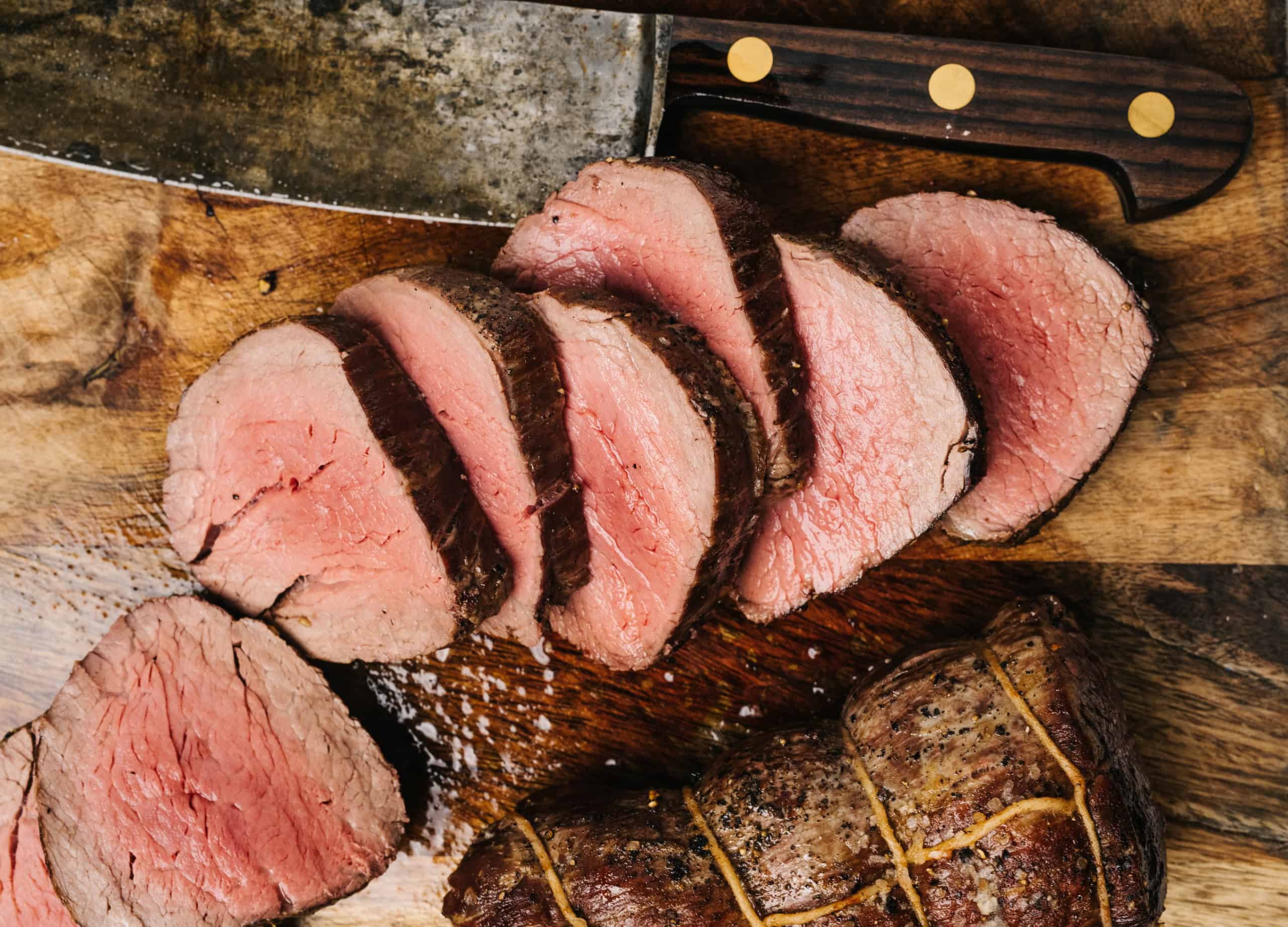- The keto diet is about low-carb, high-fat food intake.
- Keto has some potential health benefits, like weight loss and a reduced risk of diabetes, but is very restrictive.
- A well-balanced keto diet may include a variety of foods, like meats, vegetables, nuts, and eggs.
So you’ve decided to learn about keto to see if the low-carb, high-fat diet might work for you. Perhaps you have heard about keto from a fitness or health influencer, or seen a friend have success with it.
But there’s a lot more to keto than meets the eye, and you probably have questions, like “What is a keto diet? How does the keto diet work? What are the pros and cons?”
The keto diet is restrictive, so before starting, you need to do your research and make sure it’s the right move for you.
To get the lowdown on the keto diet, we talked to Emily Rivelli, MA, a registered nutrition and dietetics technician and board-certified health and wellness coach. She shared what beginners should know about the keto diet, including its advantages and disadvantages.
Note: Consult with your health care provider before making dietary changes.
What is the ketogenic diet?
The ketogenic diet is a low-carb, high-fat diet. This means you cut out high carbohydrate foods like grains, most fruits, and legumes, and eat more fatty foods like meats, fish, nuts, and eggs.
This eating style is called ketogenic—or keto for short—because the purpose of the diet is to get the body into a state of ketosis (more on that later).
Keto has actually been around for more than a hundred years. In fact, it’s been one method for treating epilepsy in kids since 1921.
This is Chapter 1 of Noom's Guide to the Keto Diet:
- Empowering Your Wellness Journey: Exciting Updates to Noom
- The Noom Kitchen Cookbook: Healthy Living Secrets
- What is the ketogenic diet? Everything you need to know
- The ultimate keto food list
- Keto weight loss: FAQs and practical tips
- Not losing weight on keto? Here are 9 reasons why
- Vegetarian keto for beginners
- 67 easy, healthy keto recipes for weight loss
- 10 low-carb keto drinks for worry-free hydration
- Keto for women: Benefits, risks, and practical tips
How does the keto diet work?
With the keto diet, you cut down significantly on carbs. According to the Harvard School of Public Health, the general rule of the keto diet is to consume less than 50 grams of carbs per day.
In terms of macronutrients, keto resources recommend—but don’t require—the following calorie breakdown:
- 70% to 80% fat.
- 5% to 10% carbs.
- 10% to 20% protein.
By shifting your macronutrient intake away from carbs and towards fat, the keto diet forces your body to change how it gets energy. This change in metabolism is called ketosis.
What is ketosis?
Ketosis is a metabolic state where your body primarily burns fat instead of carbohydrates for energy.
Eating carbs gives you glucose, which is your cells’ main source of energy. Without that glucose coming in, the body turns to an alternative source: ketones, which your body makes from breaking down fat.
Rivelli says once you are producing a high level of ketone bodies, then you’re in ketosis.
Ketosis can occur whenever ketone bodies gather in your blood. This state doesn’t just occur on a keto diet—ketosis can also occur during periods of intermittent fasting, and sometimes even when sleeping overnight.
How long will it take you to get into ketosis?
Ketosis typically will occur three to five days after you start eating less than 50 grams of carbs per day, Rivelli says. This is roughly the number of carbs found in one whole bagel.
However, this may vary from person to person, depending on factors like weight and age.
The body has to essentially be rid of glucose from carb intake before it turns to ketones for energy and starts burning fat for energy.
How many carbs can you eat on keto?
The general rule on a keto diet is that 5 to 10% of your daily caloric allotment should come from carbs, according to Rivelli.
So, for people eating 2,000 calories per day, Rivelli notes that most sources state you must be consuming less than 50 grams per day to enter ketosis.
Knowing how many carbs is just part of the equation—you also need to know what foods have carbs in them.
Carbs aren’t just in bread and potatoes. They can be found in fruits, some veggies, whole grains, dairy products, beans, and more.
Let’s say you’re aiming for 40 carbs a day on keto. That can look like one multigrain bagel thin (22 carbs) with a tablespoon of light cream cheese on it (a little more than 1 carb), an avocado (almost 5 carbs), and a third of a cup of blueberries (7 carbs), and a half cup of cottage cheese (almost 3 carbs).
Obviously, what you’re eating to stay within your carb limit can vary from day to day.
Potential benefits of a keto diet
Studies have found a number of potential health benefits from eating a keto diet.
1. Weight loss
Eating fewer carbs and more fat may help you to feel fuller and consume less calories than your body uses. This calorie deficit will cause weight loss.
Once your body reaches a state of ketosis, you might see yourself dropping body fat fairly quickly. You could see a potential weight loss of up to 10 pounds in less than two weeks.
However, Rivelli says the rapid weight loss when people first start keto is often water weight. Once your body switches to losing fat, weight loss will slow down. (Keep in mind that this rapid weight loss is hard sustain, and that losing more than 1 to 2 pounds per week can be unsafe.)
“If you’re looking to lose weight, you’ll need to be in a caloric deficit,” Rivelli says. “Ketosis alone will not result in significant weight loss.”
2. Lower risk of diabetes
Research suggests that low carbohydrate diets (like keto) may help with managing Type 2 diabetes.
Because carbohydrates directly affect insulin levels, scientists have also linked a low-carb diet to a reversal of diabetic states in people with Type 2 diabetes.
3. PCOS symptoms may improve
The keto diet may also help women who have polycystic ovary syndrome (PCOS), a condition that impacts fertility, menstruation, and weight.
PCOS can also cause insulin resistance, and following a keto diet can reduce insulin levels.
Potential drawbacks and side effects of a keto diet
Following a keto diet can lead to some unpleasant side effects. Knowing these ahead of time can help you manage your expectations and be better prepared.
1. Keto is challenging
This diet is very restrictive, which can make it hard to follow.
To eat less than 50 grams of carbs per day, you’ll need to do some mental juggling when hunger strikes. Will this banana set me over my limit? How much rice can I eat? You can’t just reach for any food, so you’ll need to plan ahead.
Not to mention, the diet can take an emotional toll. Your favorite comfort foods—like a big bowl of pasta or a few slices of pizza—are off the table if you’re going to stick to the 50 gram limit.
Plus, it’s easy to feel like a failure if you mess up one day.
At Noom, we caution people against all-or-nothing thinking. Our coaches and community support users who want to go keto, but we never tell you that a food is “bad”—even if it sets you over your carb limit.
For any diet to be sustainable—keto or not—you can’t beat yourself up. Celebrate the foods you eat, even when they’re not keto-friendly, and move forward with your day.
2. The “keto flu”
When you start keto, it can be a shock to your system, which is used to burning carbs for energy.
The “keto flu” is a group of unpleasant symptoms you may experience as your body adjusts to ketosis.
These symptoms include:
- Dizziness
- Vomiting
- Nausea
- Fatigue
- Headache
Thankfully, for many, symptoms of the “keto flu” typically resolve within a few days or weeks.
3. Stomach and gas issues
Cutting out high-carb foods on a keto diet also means you’re potentially cutting out a lot of foods that are rich in fiber. This includes bananas, oats, sweet potatoes, and certain types of beans.
Fiber aids digestion, and a low-carb diet without enough fiber may cause constipation and other issues like reflux. Be sure that you’re eating foods that have plenty of fiber in them in addition to being low-carb, including avocados, chia and flax seeds, and almonds.
4. Weight regain
If and when you reintroduce carbs or sugar into your diet, you could gain some of the weight back, Rivelli says. This is common for people because restrictive diets are difficult to maintain.
Carbohydrates cause blood sugar to spike, so eating more than a keto diet allows will tell your body to stop burning ketones for energy and return to glucose. This reaction could derail the weight loss achieved.
5. Kidney damage
On a long-term basis, keto can potentially increase the risk of developing kidney stones, says Rivelli. The causes for this aren’t fully understood.
The occurrence of kidney stones in patients on the keto diet ranges from 3% to 10%, which is significantly higher than the general population, who experience kidney stones at a rate of one in thousands.
How to start a keto diet: 5 tips for beginners
Starting a keto diet can be a big challenge, especially because limiting carbohydrate intake is hard, Rivelli explains. But some preparation can make the transition easier to manage and maintain.
1. Do your research
There’s a lot of information out there on how you can get started with keto. Much of it, including medical journals and studies, is legitimate and helpful—but Rivelli warns some of it isn’t reputable or safe.
Rivelli recommends checking and rechecking sources to make sure they come from scientifically and research-backed individuals or organizations.
Some good starting points include The Academy of Nutrition and Dietetics, Harvard Health, and the National Library of Medicine’s National Center for Biotechnology Information.
You may decide after doing your research that keto isn’t right for you—and that’s okay. At the end of the day, the key is finding healthy eating habits that feel sustainable for you.
2. Consult with your medical provider
If you have any pre-existing conditions or take any medications, your medical provider will be able to tell you if the keto diet is safe for you.
You could also check with a dietitian or nutritional professional to learn about safe and healthy options for a keto diet. Keto is mainly about limiting your carb intake, and you also want to be sure you’re nourishing your body by eating enough proteins, vegetables, fruits, and fats to maintain your health.
3. Start gradually
Research indicates that a slower, more controlled approach is the way to go as you transition to any type of restrictive diet.
Starting gradually can help you master your lifestyle change and increase the chances for success on keto.
For example, instead of immediately cutting down to less than 50 grams of carbs per day, start by eating a little less carbs than you normally do, and ease down to that number.
If you’re making the switch to keto, don’t just go cold turkey.
4. Plan your meals
Meal planning is a good way to save yourself some time and stress because you have a menu prepped that aligns with your keto eating plan. Check out these 67 keto recipes to get started planning.
Studies suggest a link between meal planning and healthier diets and less obesity.
5. Don’t be too hard on yourself
The truth is, you’ll probably get sidetracked at some point in your experience with keto, and that’s okay. If and when it happens, try not to be too discouraged.
Start a food log to help you identify any patterns or habits in your eating that may be harming or helping your keto diet and overall health.
Keep track of what you eat, when you eat, and other informational tidbits to understand yourself better and get back on course.
Keto diet FAQs
Still have questions about the keto diet? Here are answers to common concerns.
Is the keto diet safe?
According to Rivelli, ketosis itself isn’t dangerous. But if you aren’t eating balanced meals on the keto diet, you could end up with nutrient deficiencies. Other experts agree.
“If you’re not eating a wide variety of vegetables, fruits, and grains, you may be at risk for deficiencies in micronutrients, including selenium, magnesium, phosphorus, and vitamins B and C,” said registered dietitian Kathy McManus, director of the Department of Nutrition at Harvard-affiliated Brigham and Women’s Hospital.
Consult with your medical provider before starting keto to make sure it’s the right option for you.
Does keto work for weight loss?
The short answer—it depends. If you’re currently eating more calories than you burn and most of those calories are carbs, keto will likely lead to weight loss.
Most calories in a typical American diet come from carbohydrates, so a “drastic change in caloric distribution among the macronutrients can contribute to weight loss,” Rivelli says.
A study from the Cambridge University Press indicates that a very low-carb keto diet can lead to a greater amount of weight loss compared to just a low-fat diet.
A keto diet may also help with weight loss because it involves eating a high amount of fat and a moderate amount of protein. Protein intake can help you feel fuller, meaning you’re less likely to overeat and go over your calorie budget. The same can be true for fat intake and its effect on satiety.
What can I eat on keto?
On a keto diet, your main foods will be meat, meat substitutes (like tofu), nuts, cheese, and eggs. There are also plenty of vegetables (as well as some low-sugar fruits) that work with keto, as well as snack foods.
For even more detail, we’ve compiled a comprehensive list of keto foods for you.
Overall, the key is to give your body the nutrients it needs while limiting your carb intake. That means it’s important to be mindful of the types of keto-friendly foods you’re eating.
“It’s easy to do this diet the ‘wrong’ way,” Rivelli says. “Some marketed keto products aren’t especially nutritious. Eating more saturated fat items versus unsaturated items can lead to an increase in health risks, and the nutritional gap risk is greater.”
Can I go out to eat (or dine out) on keto?
Yes, you certainly can dine in restaurants on a keto diet. However, you’ll need to do research and planning ahead of time by checking out menus and looking for ways you can keep your carb intake low.
Be mindful of sides and sauces that come with meals. Some—like butter or bearnaise—are great for keto, while others, like mashed potatoes and rice, should be avoided due to the number of carbs they contain.
Can I be vegetarian and keto?
Yes, with proper education, guidance, and support. Consult with your medical provider about being vegetarian and keto and what that might mean for you in terms of diet and supplements.
Because both the keto diet and vegetarian diet have been proven to be effective weight loss methods, implementing aspects of both could be beneficial.
Be careful, though—keto eliminates some of the foods that are nutritional staples of a vegetarian diet, including legumes and whole grains.
Read more about vegetarian keto.
How Noom can work with the keto diet
In general, Noom doesn’t focus on restrictive diets. However, Noom can work alongside a keto diet to help you reach your goals.
While the long-term effects of keto have yet to be determined, the consensus is that, at least in the short term, it’s an effective approach for weight loss and has other potential health benefits.
If you’re considering keto, give yourself the tools to choose nutrient-dense and delicious foods. You can learn more about how to cut carbs in a healthy, sustainable way by reading our piece on keto for weight loss.
Why you can trust us
At Noom, we’re committed to providing health information that’s grounded in reliable science and expert review. Our content is created with the support of qualified professionals and based on well-established research from trusted medical and scientific organizations. Learn more about the experts behind our content on our Health Expert Team page.



 Meaghan Cameron
Meaghan Cameron
 Noom Team
Noom Team

 Shoshana Fishbein
Shoshana Fishbein
 Melissa Kay
Melissa Kay
